 W
WAeacidae refers to the Greek descendants of Aeacus, including Peleus, son of Aeacus, and Achilles, grandson of Aeacus—several times in the Iliad Homer refers to Achilles as Αἰακίδης. Neoptolemus was the son of Achilles and the princess Deidamea. The kings of Epirus and Olympias, mother to Alexander the Great, claimed to be members of this lineage.
 W
WApollo Agyieus was an epithet of the Greek god Apollo describing him as the protector of the streets, public places, and the entrances to homes. As such he was worshiped at Acharnae, Mycenae, and at Tegea. The origin of the worship of Apollo Agyieus in the last of these places is related by Pausanias.
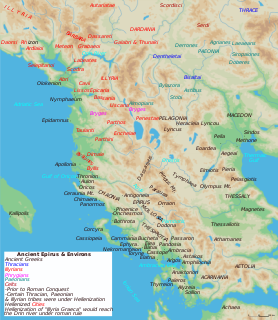 W
WIn Greek mythology, Ambracia was an Oeachalian princess and daughter of Melaneus, son of Apollo and Oechalia, and thus, sister of Eurytus. The city of Ambracia in Epirus was named after her.
 W
WIn Greek mythology, Ameinias was a young man who fell in love with the beautiful Beotian hunter Narcissus, who had already spurned his male suitors, according to the version of Narcissus's myth by Conon. Narcissus also spurned him and gave him a sword. Ameinias committed suicide at Narcissus's doorstep after being rejected by him. He had prayed to Nemesis to give Narcissus a lesson for all the pain he provoked. Narcissus walked by a pool of water and decided to drink some. He saw his reflection, became entranced by it, and killed himself because he could not have his object of desire, or gazing endlessly at the image, he slowly pined away and was transformed by the nymphs into a narcissus flower. Others say he was instead filled with remorse and killed himself beside the pool—and from his dying life's blood the flower was born.
 W
WAmpelos or Ampelus (Latin) was a personification of the grapevine and lover of Dionysus in Greek and Roman mythology. He was a satyr that either turned into a Constellation or the grape vine, due to Dionysus.
 W
WIn Greek mythology, Amykos, Latinized as Amycus, was the king of the Bebryces, a mythical people in Bithynia.
 W
WIn Greek mythology, Anaxarete was a Greek maiden, "a proud princess in the line of Teucer's descendants", who refused the advances of a shepherd named Iphis.
 W
WAn Apollo Citharoedus, or Apollo Citharede, is a statue or other image of Apollo with a cithara (lyre). Among the best-known examples is the Apollo Citharoedus of the Vatican Museums, a 2nd-century AD colossal marble statue by an unknown Roman sculptor. Apollo is shown crowned with laurel and wearing the long, flowing robe of the Ionic bard. The statue was found in 1774, with seven statues of the Muses, in the ruins of Gaius Cassius Longinus' villa near Tivoli, Italy. The sculptures are preserved in the Hall of the Muses, in the Museo Pio-Clementino of the Vatican Museums.
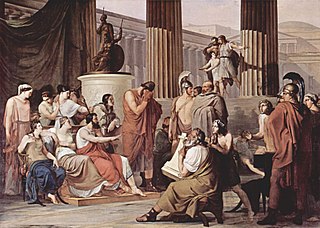 W
WIn Greek mythology, Queen Arete of Scheria was the wife of Alcinous and mother of Nausicaa and Laodamas.
 W
WIn Greek mythology, Argus was the builder and eponym of the ship Argo, and consequently one of the Argonauts; he was said to have constructed the ship under Athena's guidance. Argus was commissioned to build the Argo by King Pelias so that the crew that would come to be known as the Argonauts could find and bring the Golden Fleece back to Iolcus, which was in Thessaly.
 W
WIn Greek mythology, Automedon, son of Diores, was Achilles' charioteer.
 W
WIn Greek mythology, Canace was a daughter of Aeolus and Enarete, and lover of Poseidon. Her brothers were Athamas, Cretheus, Deioneus, Magnes, Perieres, Salmoneus and Sisyphus. Her sisters were Alcyone, Arne, Calyce, Peisidice, Perimede and Tanagra. With Poseidon, she was the mother of Aloeus, Epopeus, Hopleus, Nireus and Triopas.
 W
WIn Greek mythology, Capaneus was a son of Hipponous and either Astynome or Laodice, and husband of Evadne, with whom he fathered Sthenelus. Some call his wife Ianeira.
 W
WCastalia, in Greek mythology, was a naiad-nymph, a daughter of Achelous who inhabited the Castalian spring in Delphi. In older traditions, Castalian spring already existed by the time Apollo came to Delphi searching for Python. According to some, the water was a gift to Castalia from the river Cephisus. Latin poet Lactantius Placidus in his commentary on Statius' Thebaid tells that to escape the amorous advances of Apollo, Castalia transformed herself into a fountain at Delphi, at the base of Mount Parnassos, or at Mount Helicon. Castalia could inspire the genius of poetry to those who drank her waters or listened to their quiet sound; the sacred water was also used to clean the Delphian temples. Apollo consecrated Castalia to the Muses.
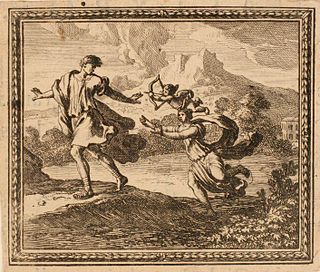 W
WIn Greek mythology, Caunus or Kaunos was a son of Miletus, grandson of Apollo and brother of Byblis.
 W
WCithaeron or Kithairon is a mountain and mountain range about ten miles long, in central Greece. The range is the physical boundary between Boeotia in the north and Attica in the south. It is mainly composed of limestone and rises to 1,409 metres (4,623 ft). The north-east side of the range is formed by the mountain Pastra.
 W
WIn Greek mythology, Combe was a daughter of the river god Asopus. She was equated with Chalcis, another of Asopus' many daughters, and associated with the island Euboea: the city Chalcis was reported to have been named after "Combe, who was also called Chalcis". Combe was said to have been dubbed Chalcis because she made bronze weapons ; the mythological tradition also makes her the first woman to cohabit with a man, and mother of one hundred children.
 W
WIn Greek mythology, Cragaleus was a son of Dryops who dwelt in the land Dryopis next to a spring which was believed to have appeared at a place where Heracles hit the earth with his club. He was renowned as just and wise, and was one day visited by Apollo, Artemis, and Heracles who asked him to act as an arbiter in their argument as to which of the three should become patron of Ambracia, Epirus. Apollo argued that the city should belong to him on account of the fact that Epirus was once conquered by his son Melaneus, and that he assisted the Ambraciotes in the war against the natives of Epirus, and brought law and order to Ambracia. Artemis reminded that it was she who saved the Ambraciotes from the tyrant Phalecus, having sent a lioness to kill him. Finally, Heracles brought up the fact that it was he who destroyed the many non-Greek peoples of Epirus for trying to steal the kine of Geryon from him, and that the Corinthians, who later came to Epirus and founded Ambracia, were his descendants. Cragaleus considered Heracles' argument the most convincing and declared him the winner. Apollo was enraged and turned Cragaleus into stone. Since then, the Ambraciotes sacrificed to Apollo the Saviour, but believed their city to belong to Heracles and the Heracleidae, and honored Cragaleus with sacrifices as well.
 W
WIn Greek mythology, Creusa or Glauce, Latin Glauca, was a princess of Corinth as the daughter of King Creon.
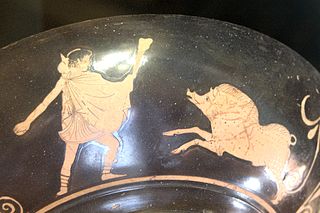 W
WThe Crommyonian Sow is a pig in Greek mythology.
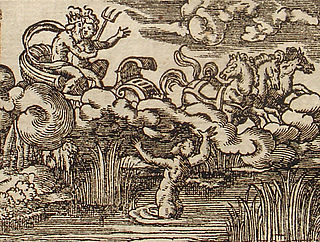 W
WIn Roman mythology, Cyane was a nymph who tried to prevent Dis from abducting Proserpina, her playmate. Upon failure, she dissolved away in tears and melted into her pool.
 W
WIn Greek mythology, Deidamia was a princess of Scyros as the daughter of King Lycomedes.
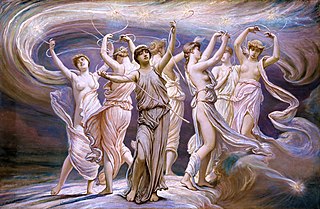 W
WThe Pleiad Electra of Greek mythology was one of the seven daughters of Atlas and Pleione. Electra was the wife of Corythus, to whom she bore Iasion. She was seduced by Zeus and gave birth to Dardanus. According to one legend, she was the lost Pleiad, disappearing in grief after the destruction of Troy. She was called Atlantis by Ovid, personifying the family of Pleiades. Electra means "amber," "shining," and "bright."
 W
WEntellus was a Trojan or Sicilian hero from whom the town of Entella in Sicily was believed to have received its name. He was a friend of the Trojan king Acestes. A boxing match between Entellus and an arrogant younger boxer, Dares, is described in the fifth book of Virgil's Aeneid.
 W
WIn Greek mythology, Euphorbus was a Trojan hero during the Trojan War.
 W
WIn the Iliad, Hecamede, daughter of Arsinoos, was captured from the isle of Tenedos and given as captive to King Nestor. Described as "skilled as a goddess", "fair" and "proud", Hecamede was not a concubine but a serving woman. In her most prolonged mention, she serves Nestor and Machaon Pramnian wine, a medicinal drink.
 W
WHelle, or Ellie, sometimes also called Athamantis (Ἀθαμαντίς), was a character in Greek mythology who figured prominently in the story of Jason and the Argonauts.
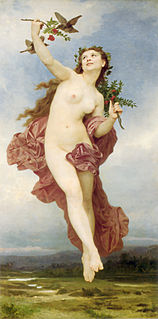 W
WIn Greek mythology Hemera was the personification of day and one of the Greek primordial deities. She is the goddess of the daytime and, according to Hesiod, the daughter of Erebus and Nyx.
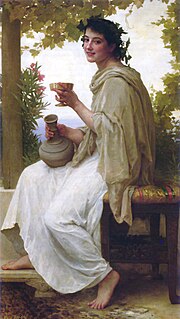 W
WIn Greek mythology, Hermippe was a daughter of Boeotus. She was married to Orchomenus, son of Zeus and the Danaid Isonoe, but had a son Minyas with Poseidon. Orchomenus became legal father of her son.
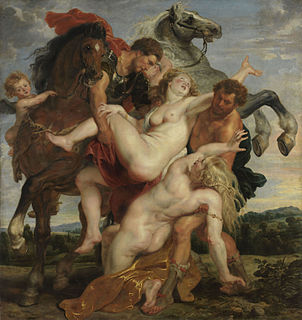 W
WIn Greek mythology, Hilaera was a Messenian princess.
 W
WIn Greek mythology, Hippocrene was a spring on Mt. Helicon. It was sacred to the Muses and formed by the hooves of Pegasus. Its name literally translates as "Horse's Fountain" and the water was supposed to bring forth poetic inspiration when imbibed.
 W
WIn Greek mythology, Hippodamia.
 W
WIn Greek and Roman mythology, Iapyx, Iapux or Iapis was a favorite of Apollo. The god wanted to confer upon him the gift of prophecy, the lyre, etc.; but Iapyx, wishing to prolong the life of his father, preferred the more tranquil art of healing to all the others.
 W
WIn Greek mythology, an ipotane was a member of a race of half-horse, half-humans. The ipotanes are considered the original version of the centaur.
 W
WIssorium is a hill on the northern city border of Sparta, with a sanctuary to Artemis Isora, possibly the heights known today as Klaraki. It was a temple dedicated to Diana, and was also called Isoria, pitanatis.
 W
WKhalkotauroi also known as the Colchis Bulls are mythical creatures that appear in the Greek myth of Jason and the Golden Fleece.
 W
WIn Greek mythology, Krotos or Crotus was the son of Pan and Eupheme. He dwelt on Mount Helicon and kept company of the Muses, whom his mother had nursed.
 W
WLaelaps was a Greek mythological dog who never failed to catch what he was hunting. In one version of Laelaps' origin, it was a gift from Zeus to Europa. The hound was passed down to King Minos. Procris's husband, Cephalus, decided to use the hound to hunt the Teumessian fox, a fox that could never be caught. This was a paradox: a dog who always caught its prey versus a fox that could never be caught. The chase went on until Zeus, perplexed by their contradictory fates, turned both to stone and cast them into the stars as the constellations Canis Major (Laelaps) and Canis Minor.
 W
WIn Greek mythology, Laertes was the father of Odysseus, an Argonaut, and a participant in the hunt for the Calydonian Boar. His title was King of the Cephallenians, an ethnic group who lived both on the Ionian islands and on the mainland, which he presumably inherited from his father Arcesius and grandfather Cephalus. His realm included Ithaca and surrounding islands, and perhaps even the neighboring part of the mainland of other Greek city-states.
 W
WLatinius Silvius was the fourth descendant of Aeneas and fourth in the list of mythical kings of Alba Longa. It is, however, unclear if this person ever existed.
 W
WLearchus or Learches is a figure in Greek mythology and was the son of Athamas and Ino as well as the brother of Melicertes.
 W
WThe Bibliotheca Classica, or Classical Dictionary containing a full Account of all the Proper Names mentioned in Ancient Authors is the best-known work of John Lemprière, an English classical scholar. Edited by various later scholars, the dictionary long remained a readable if not absolutely trustworthy reference book in mythology and classical history. Lemprière wished "to give the most accurate and satisfactory account of all the proper names which occur in reading the Classics, and by a judicious collection of anecdotes and historical facts to draw a picture of ancient times, not less instructive than entertaining."
 W
WIn Greek mythology, Leucippus was a Messenian prince. The Boeotian town of Leuctra is said to have derived its name from him.
 W
WThe name Lycomedes may refer to several characters in Greek mythology, of whom the most prominent was the king of Scyros during the Trojan War.
 W
WIn Greek mythology, Machaon was a son of Asclepius; and the older brother of Podalirius. He and his brother led an army from Tricca in the Trojan War on the side of the Greeks.
 W
WIn Greek mythology, Megara was a Theban princess and the first wife of the hero Heracles.
 W
WIn Greek mythology, Metanira or Meganira was a queen of Eleusis and wife of Celeus.
 W
WMyrmekes are mythical creatures in Greek mythology. Their name is Greek for "ants."